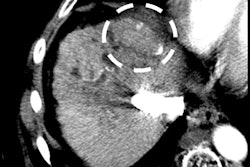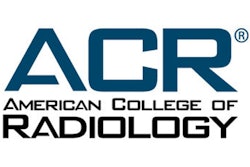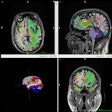With the exception of five combinations, most major feature combinations in the same CT/MRI Liver Imaging Reporting and Data System (LI-RADS) category have similar positive predictive values (PPVs) for liver cancer in high-risk patients, according to a study published June 10 in Radiology.
Identifying the outliers represents opportunities for refinement and may help drive the future evolution of LI-RADS, noted lead author Robert Adamo, MD, of the University of Ottawa in Ontario, Canada, and an international group of colleagues.
“These findings highlight the importance of ongoing evaluation and potential reclassification to better align the diagnostic criteria with the observed performance,” the group wrote.
The LI-RADS version 2018 diagnostic algorithm combines imaging features to assign risk categories to liver observations in patients at high risk for hepatocellular carcinoma (HCC), with LI-RADS categories LR-1, LR-2, LR-3, LR-4, and LR-5 corresponding to different levels of risk, the authors explained. Primarily, five major features determine categorization: nonrim arterial phase hyperenhancement (APHE), nonperipheral washout, enhancing capsule, size, and threshold growth.
While previous systematic literature reviews have evaluated the positive predictive value (PPV) for HCC for each LI-RADS category, studies that evaluate combinations of imaging features before grouping them into LI-RADS categories are limited, the authors noted.
To bridge the knowledge gap, the researchers conducted a systematic review and individual participant data (IPD) meta-analysis to establish PPVs of the LI-RADS major feature combinations.
They included 46 studies that reported HCC percentages for LI-RADS categories in patients at high risk and used a one-stage random-effects IPD meta-analysis to calculate PPVs for HCC diagnosis. They then used a Wald test to compare feature combinations. The analysis included 6,765 patients with 7,500 liver observations.
According to the results, the majority of LI-RADS major feature combinations demonstrated PPVs that did not differ from others within the same category, which supports the current categorizations, the researchers reported. The pooled PPV estimates for major feature combinations were 58.3% for LR-3, 80.8% for LR-4, and 95.8% for LR-5.
Yet five major feature combinations yielded PPVs that differed from other combinations in the same LI-RADS category, as follows:
- LR-3 without nonrim arterial phase hyperenhancement (APHE) smaller than 20 mm and no additional features (PPV, 14.8%; p < 0.001)
- LR-3 with APHE 10-19 mm without additional features (PPV, 68.3%; p = 0.012);
- LR-4 without APHE at least 20 mm but with enhancing capsule (PPV, 50.8%; p = 0.009);
- LR-5 with APHE 10-19 mm and threshold growth (PPV, 74.4%; p < 0.001)
- LR-54 with APHE at least 20 mm with threshold growth (PPV, 82.5%; p = 0.02)
“This meta-analysis revealed that most major feature combinations in the same CT/MRI LI-RADS category had similar positive predictive values for hepatocellular carcinoma in patients at high risk for cancer, with the exception of five combinations within LR-3 through LR-5,” the group wrote.
Ultimately, the differences represent opportunities for refinement and are pivotal to driving the future evolution of LI-RADS, the group concluded.
In an accompanying editorial, Sarah Johnson, MD, of the University of Toronto, noted that the study illustrates a commitment to one of the core principles of LI-RADS, which is its dynamic nature.
“The LI-RADS Steering Committee intends to release updated versions every 3-4 years," Johnson wrote. "Investigations such as this meta-analysis provide important data to inform new iterations of the system.”
The study ultimately contributes to the quest to optimize LI-RADS, which will hopefully strengthen the desire to adopt LI-RADS more widely across international institutions, Johnson concluded.
The full study is available here.



.fFmgij6Hin.png?auto=compress%2Cformat&fit=crop&h=100&q=70&w=100)





.fFmgij6Hin.png?auto=compress%2Cformat&fit=crop&h=167&q=70&w=250)











